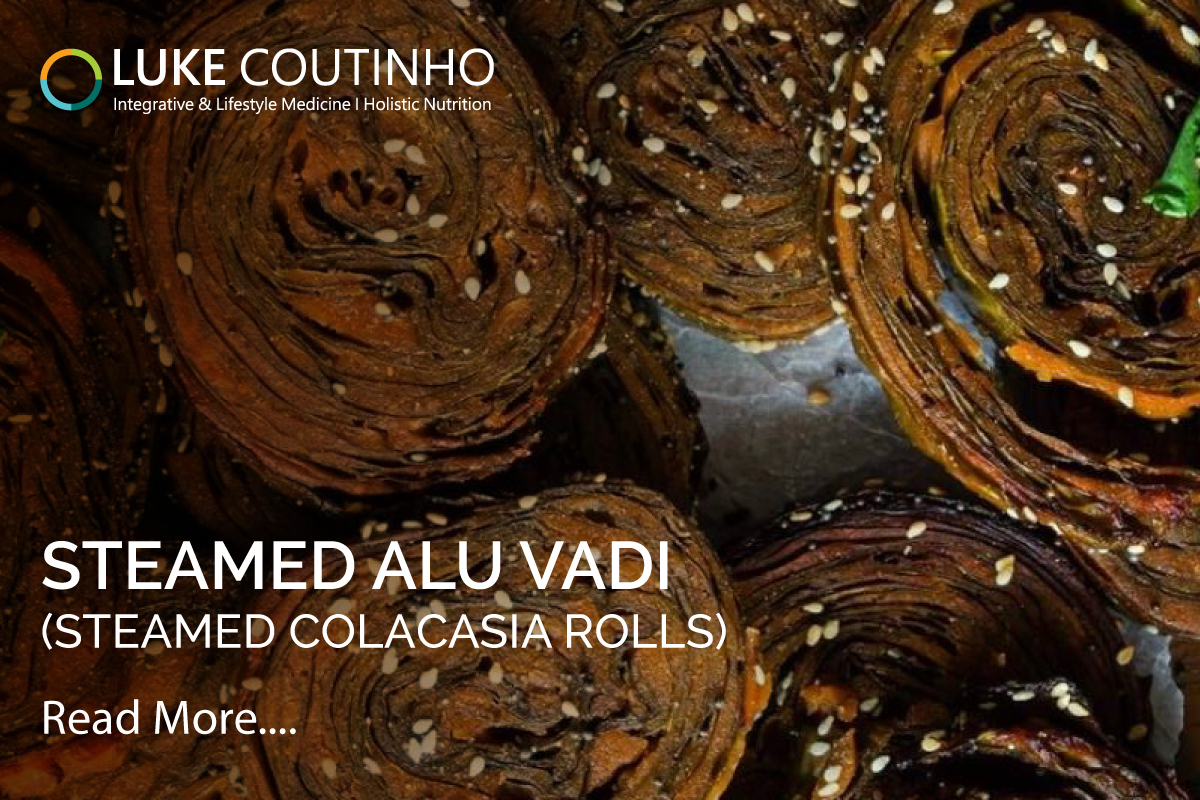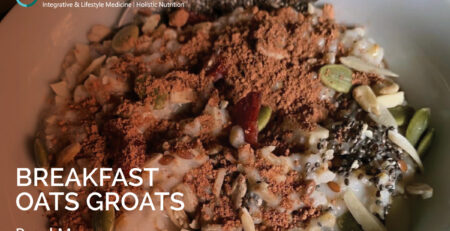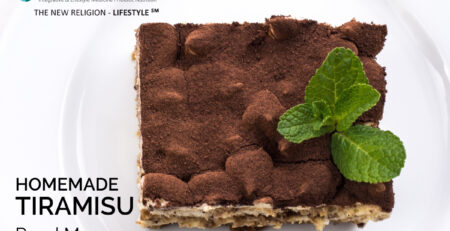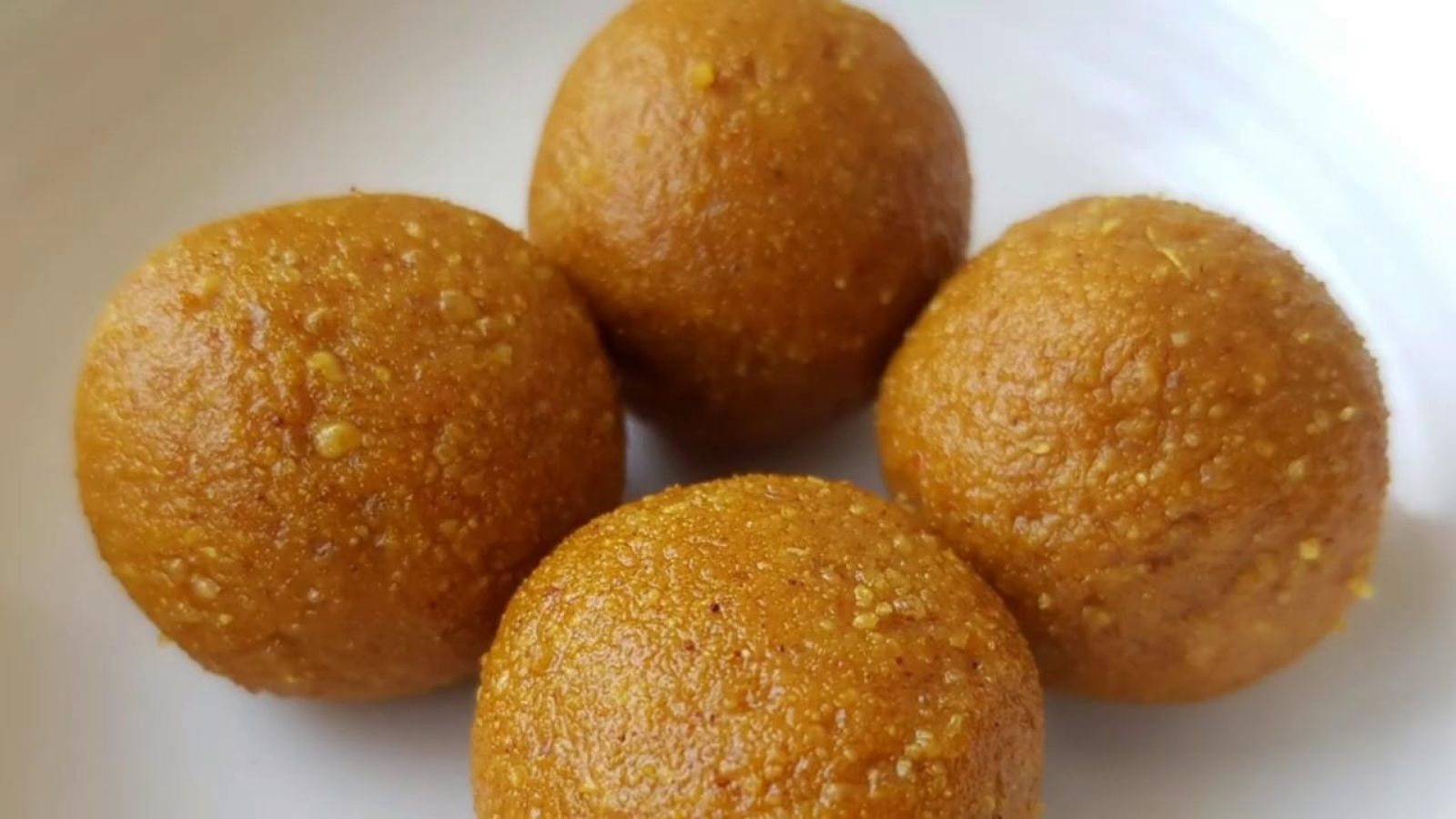Alu Vadi – Pelting Mumbai rains call for the most comforting tea time snack -Alu vadi a perfect tea time match.

Alu Vadi - Pelting Mumbai rains call for the most comforting tea time snack -Alu vadi a perfect tea time match.
Equipment
- Steamer
- Sharp knife
Ingredients
- 6 large fresh colocasia leaves arvi/arbi/taro leaves
- 200 g chickpea flour besan
- 50 g rice flour
- 50 g sattu flour
- 2 tsp ground cinna
- 1 tsp immunity powder
- 2 tsp ground ceylon/srilankan cinnamon
- 1/4 tsp Ajwain
- 1 tsp ground fennel seeds
- 1 tsp chilli powder
- 1/2 tsp ground cumin seeds
- 1 1/2 tsp salt
- 1 inch ginger peeled and grated
- 2 green chillies optional
- 5 tbsp fresh tamarind pulp
- 100 g jaggery powder
- 500 ml water
For the tempering
For the tadka:
- 1 tbsp cold pressed coconut oil or unrefined mustard oil
- 1 tbsp mustard seeds
- 1 tsp asafoetida
- 2 tbsp sesame seeds
- 10-12 curry leaves
- 2 tbsp fresh coriander leaves to garnish.
Instructions
To prepare the colocasia leaves:
- Begin by wiping the colocasia leaves .
- Clean with a damp kitchen towel.
- Clean both sides thoroughly.
- Use a sharp knife to laterally trim the thick spine that runs down the leaf.
- Simply run the knife across the stalk to flatten it so it feels flat to the touch.
- Continue this process for all of the veins that branch out from the centre.
- Repeat the trimming for all the leaves.
To make the batter:
- In a large bowl, combine the chickpea flour, rice flour,sattu flour , ground cinnamon, immunity powder, ajwain,ground fennel seeds, ground cumin seeds, chilli powder, and salt .
- Whisk to combine.
- Add the grated ginger, green chilli paste, tamarind and jaggery powder.
- Slowly add the water, whisking all the time to ensure a smooth paste is formed without lumps.
- Continue whisking for 5 minutes until the paste is smooth.
- Set aside for 15 minutes.
- To assemble the Alu Vadi-
- Organise the colocasia leaves by size.
- The assembly process will begin with the largest leaves to the smallest leaf.
- Take the largest colocasia leaf and lay it (dull side up) out on a clean, flat surface.
- Top with a large spoonful of batter.
- Use a rubber spatula, or your hands to spread the batter over the leaf.
- Take the second largest leaf and place it dull side-up in the opposite direction to the first leaf.
- It should look like a butterfly, the four corners resembling wings.
- Repeat the spreading process so that the second leaf is covered and place the next leaf in the opposite direction once again.
- Once all the five leaves are stacked , cover it finally with more batter.
- Fold one side of the leaves down to the centre.
- Repeat for the other side so the leaves meet in the middle.
- It should form a rectangle.
- Cover with more batter.
- Starting from the short side, begin to form a tight roll.
- Ensure the roll is as tight as it can be without the batter squeezing out or the leaves breaking.
- Rub any remaining batter on the outside of the log to stick down any loose ends.
To steam the Alu Vadi
- Heat up water and place the pot in a cooker.
- Grease a dish with a few drops of oil and place it in the pot.
- Place the rolls on the dish with the sealed side facing down.
- Close the lid and steam on medium heat for 15 minutes.
- Let it cool down and cut the roll into ½ in wide pieces.
To finish the Alu vadi:
- Slice the cooled Alu vadi into 1/2cm pieces using a sharp knife.
- If you prefer a lighter snack, you can eat them steamed too.
For the tampering
- Heat the oil in a pan.
- Add the mustard seeds once they crackle, add asafoetida, sesame seeds and curry leaves.
- Arrange the Alu vadi slices in the pan and cook on both sides until golden brown and crispy all over.
- Remove from the pan and garnish with fresh coriander leaves.
- Serve warm or at room temperature with masala chai.
Notes
- The most common problem with Alu Leaves, especially if they are not tender or fresh, is that it causes itching in the throat.
- Hence, a souring agent is added , Here tamarind pulp is added to the recipe.
- The leaves should be green, without any spots or bugs (turn back to check any pest infestation, while buying).
- We can use spinach leaves also when the colocasia leaves are unavailable.
- We can use grated coconut for garnish too.
- Vitamin C in 1 cup of Colocasia leaves gives you at least 86% of the daily value that your body needs.
- They are rich in Iron ,Vitamin A and contain omega 3, an essential fatty acid which provides material for hormones to control the contraction and relaxation of the arteries wall.
- Do not consume taro leaves as a raw vegetable or in their raw state.
- They should be soaked first in clean water and then cooked for at least 30 minutes.
Nutrition
|
From a pimple to cancer, our You Care Wellness Program helps you find a way Talk to our integrative team of experts today 18001020253 |








Leave a Reply